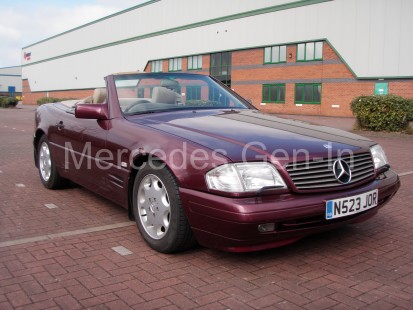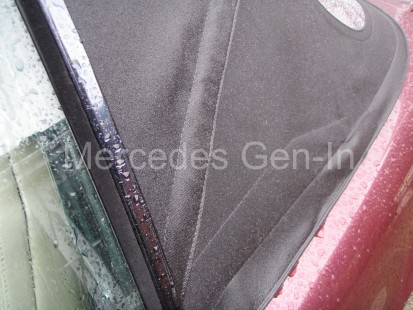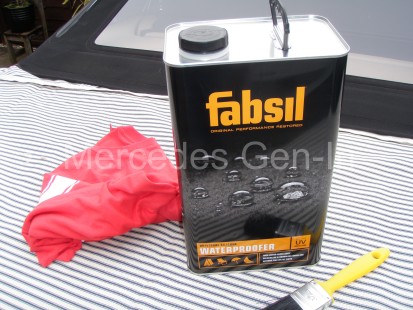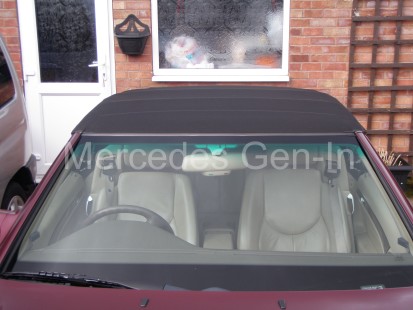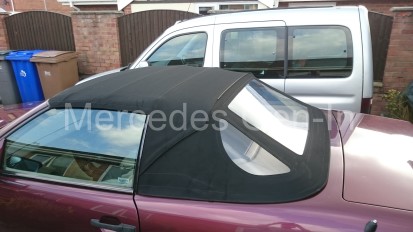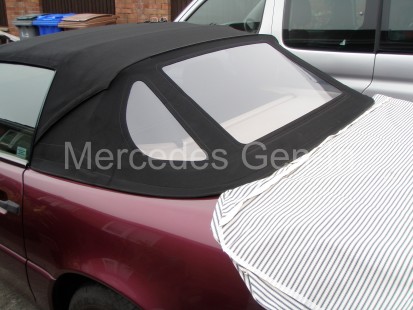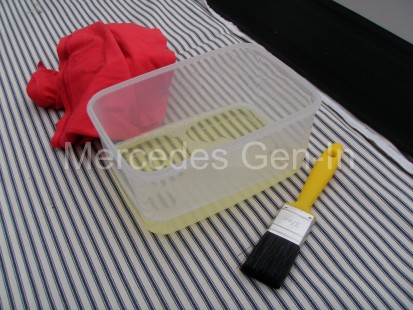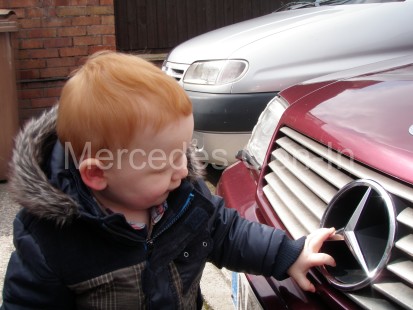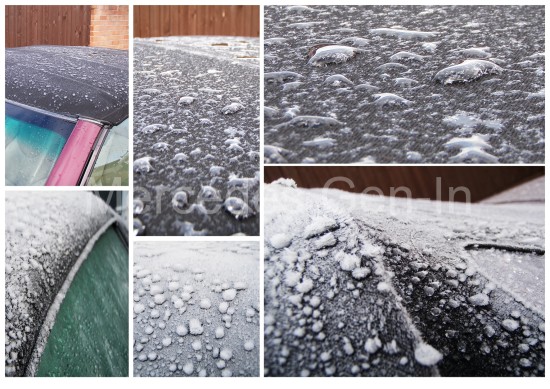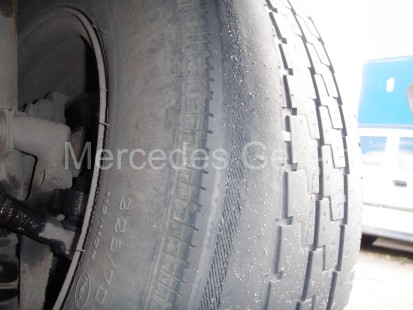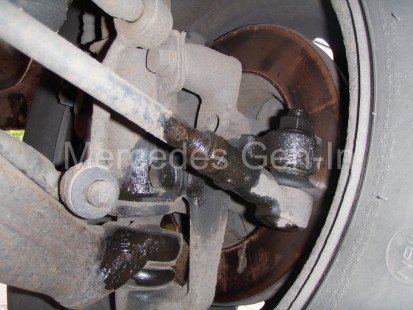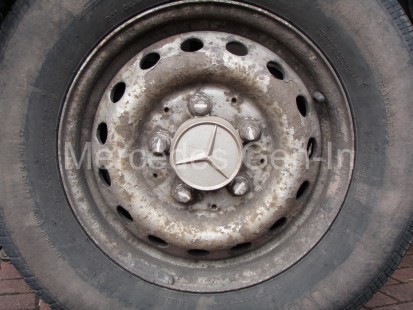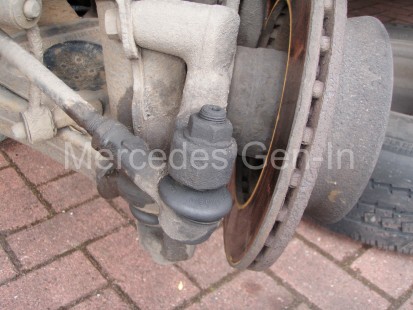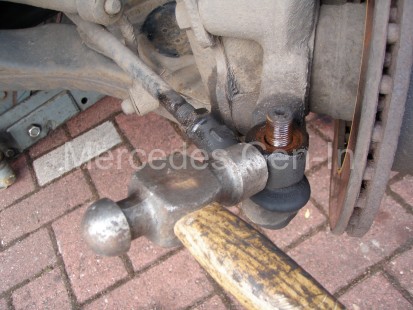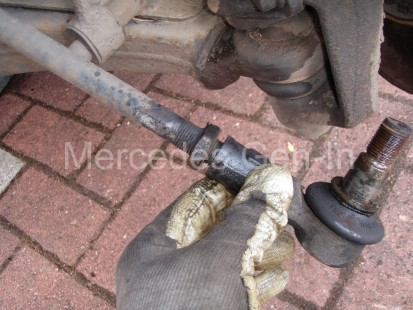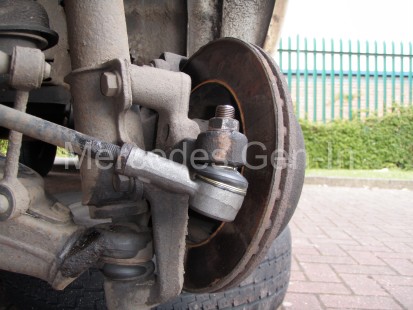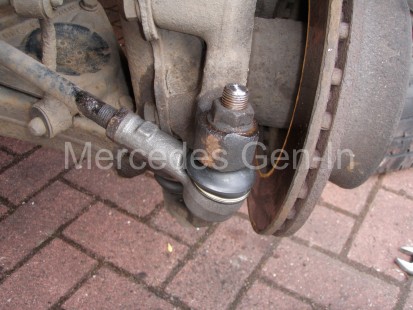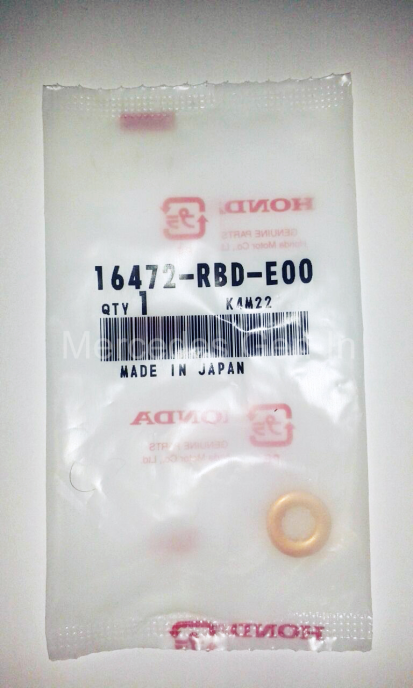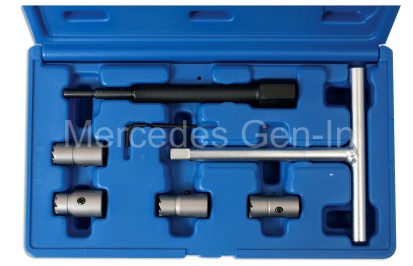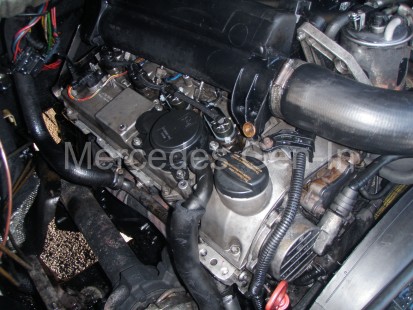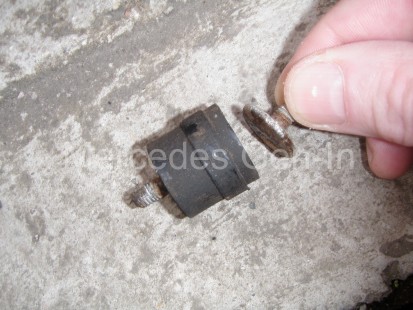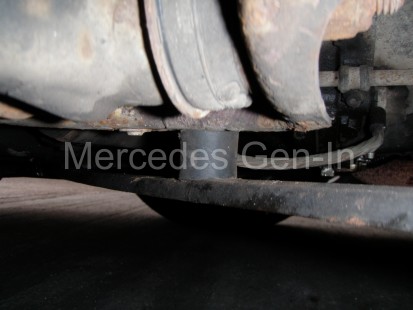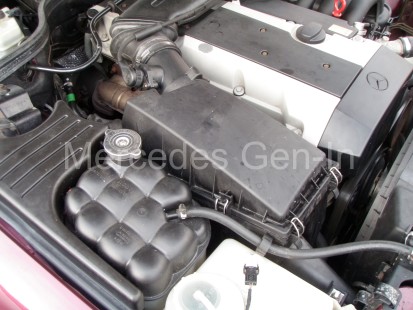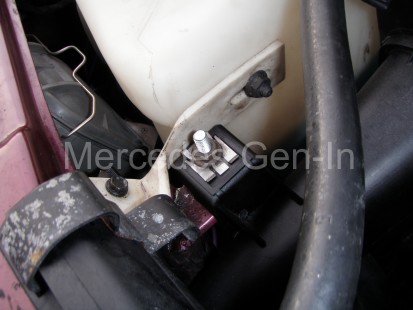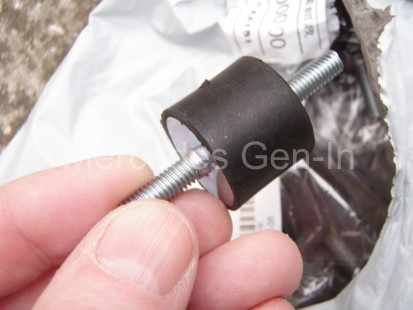thin
Even though the Mercedes SL320 (R129) passed its MOT in December with flying colours, there has always been a slight uncertainty at speed with regard to wandering. This is not ‘lane changing’ wandering we are talking about here, but just a hint of rear end steering that needed to be corrected in the 60+ mph range when buffeted or the road surface commanded, by the way of uneven camber or rutting of the tarmac.
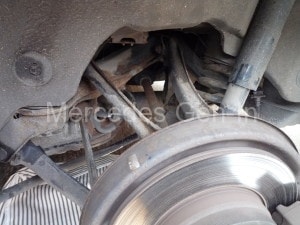
Either way, it would be nice to sort this minor issue as the SL is such a pleasing drive and you do just ‘Waft’ along on a magic-carpet ride, with surety even when pushed. I had previously had the vehicle in the air and ‘barred’ the various multi-link suspension components in every way possible. Although the rubber bushes in each one of the pressed steel control arms was almost 20 years old, they were together and were just showing slight signs of perishing, with no real visually alarming deterioration.
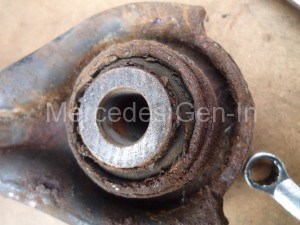
Even gripping the wheel and then exerting huge forces with a crowbar under the tyre resulted in what seemed a taught rear suspension layout, seemingly not wanting for anything. But something was not just right and it was bugging me!
Previously I had already fine tooth-combed the front end, discovering that the lower wishbone (control arm) bushes were starting to get a little saggy, but were holding there own. Visually the worst was the off side front rear bush in the set, but even when barred to extreme it still held firm. A job for the future. The front dampers were a little worn with only the slightest play in the rod/cartridge bush at normal ride height – again nothing to cause the wandering or write home about. It goes without saying the steering components came under detailed scrutiny and in every case proved wholly serviceable, with no unusual tyre wear either on the front or rear.
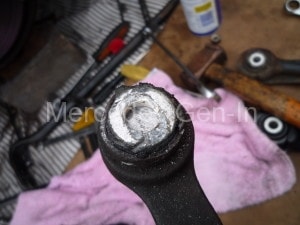
So what to do… well I decided the rear steering was obviously a result of some issue with the rear suspension, as the car would shift or wander needing correction through the steering. If this was front end wander, you would be fighting the wear in the normal course of driving, over correcting as you drove. So the decision was – it was the rear, you could kind of sense it happening under your seat, as you are sitting almost on top of the rear axle. It was almost as if you were being slightly ‘pushed’ sideways from the area under the seat. Characteristics were unusual in that there seemed no repeatable reason for the movement. I tried driving in ruts LHS/RHS, applying power, driving on white lines etc. It had a mind of its own – only the car knew when it wanted to do it!
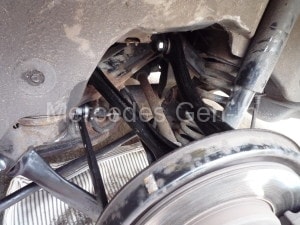
Having double checked the rear sub-frame mountings and bushings for wear, I made the decision to jump in with both feet and totally refresh the rear suspension – maybe I would find something along the way that would directly point to the ‘Wandering Star’…
I sourced a complete kit of rear suspension parts containing four control arms per side, all new bolts, fixings and washers. The Delphi Kit price was very good value as the component parts individually added up to almost double the kit price by the time you had purchased – new camber adjustment bolts, washers and lock nuts etc. On opening the kit, it was obviously good quality and proved excellent value against OEM or other available parts. All the contents were checked against the originals as they were removed and bush centre to centre dimensions were crack on.
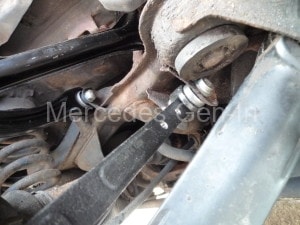
So on with the job, side at a time…
Raise the vehicle using the rear chassis jacking point and remove the road wheel. Get a sturdy support to hand- blocks of wood are ideal, these will need to be inserted under the rear sprung arm to take the weight of the vehicle when necessary during the work, especially when finally tightening the suspension fixings under normal ride height conditions.
Remove the plastic Spring Link cover by undoing the two 10mm head self tapping screws and prying off the cover from the lip on the arm. Now adjust the jack so half of the weight of the car is supported on the jack under the chassis and the other half resting the Spring Link, supported by using your wooden blocks. You will need to adjust the weight distribution at times between the chassis and Spring Link, by raising and lowering the jack slightly. This will release tension from the suspension links allowing you to easily withdraw the various pins from the eyes and hangers as and when required.
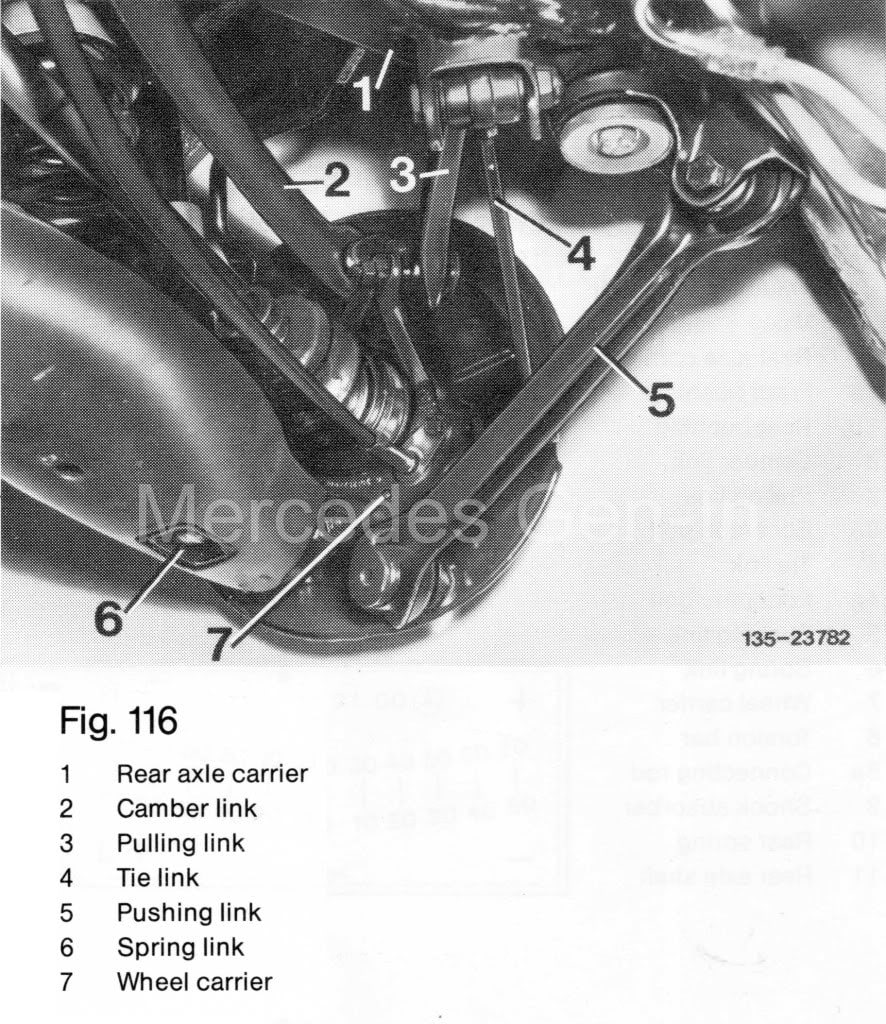
Start by removing the upper forward arm, The Pulling Link. Your tools of choice for the job in hand will mainly be a pair of good 19mm combination spanners, a 17mm combination spanner, 17mm socket and 18mm combo for interlocking with the other spanners to increase leverage to break any rust. The new fixings/bolts and pins will require a triple square splined tool, it would be better to check exactly what size you need by first inspecting the parts in the kit when you purchase it. A heavy copper hammer and a sharp hack saw will also be required!
Tightening torques for bushes: Body end = 70 Nm – Wheel end= 70 Nm with M12 thread, if M10 thread then 40 Nm.
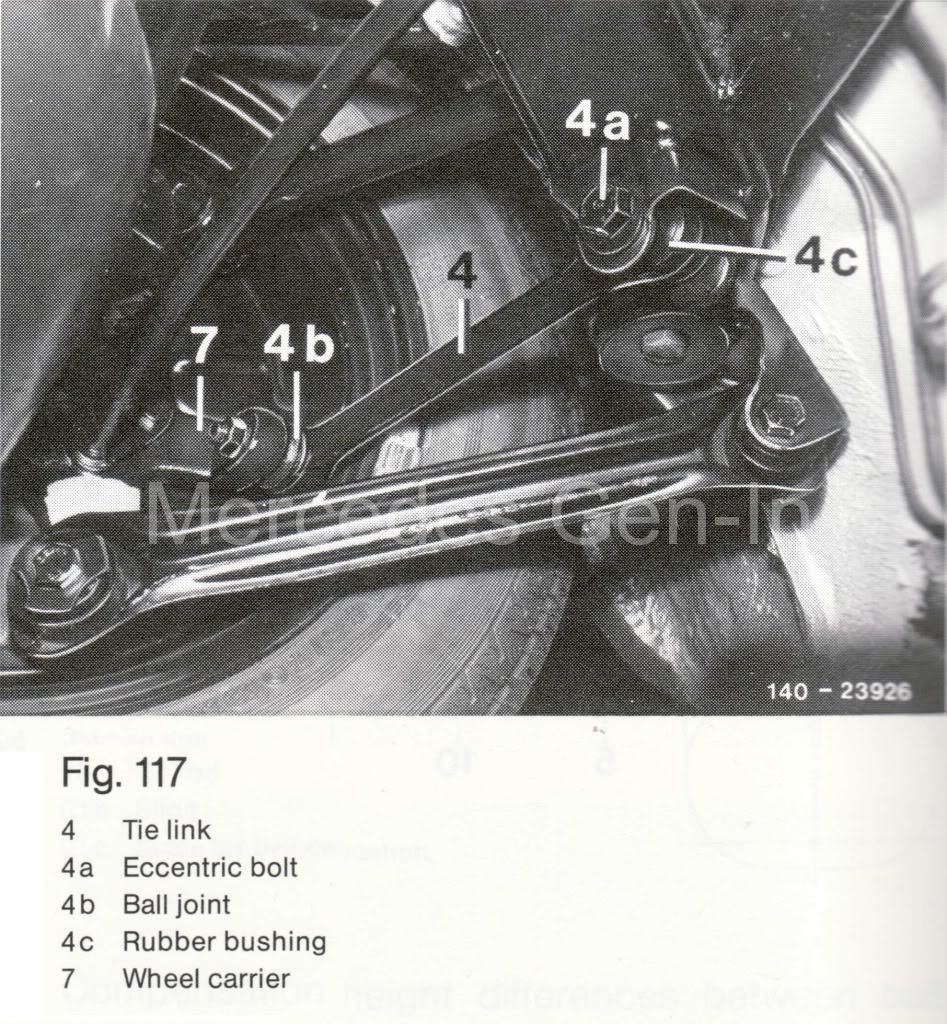
Open the kit of new parts and select the correct arm and refit it to the car, once fixed, just nip up the fixings. Lower the chassis to place pre-load weight onto the suspension, then fully tighten at the two fixing points on the Pulling Link, raising the vehicle again when done.
Now remove the Pushing Link, (Forward lower arm without a ball joint) This will have a plastic trim cover clipped onto it, this can be transferred to the new link when you refit the item. Begin to remove the Tie Link using a 17mm spanner on the nut attached to the hub carrier, if the ball joint begins to spin you may need to use a hexagon key in the taper end to hold it while you undo the lock nut completely. If it does not spin, you will get the nut off easily, then using a ball joint separator (Pickle Fork) part the joint.
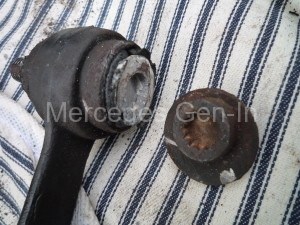
Tackle the other end on the Tie link chassis bushing by undoing the 19mm nut. Make sure you paint mark the adjusting eccentric cam so it can be returned to its correct position on reassembly. Typically this fixing bolt will be seized. It has a longitudinal slot in the bolt to key with the adjustment cam. In use this allows water to seep along into the joint and internally corrode the alloy bush to the steel pin – you may be lucky, but probably wont be! Faced with a seized through-bolt, your only option is to cut off the bush and bolt with a hacksaw. Begin your cut from underneath on the first alloy step of the bush, on the triple square end. Don’t try and cut the steel outer as you will be sawing for ever. Short strokes will be allowed and it takes a while to cut to a maximum of 90 per cent through the bush and bolt. Any further and you will begin to cut the chassis or hanger bracket, so be aware of your limitations while sawing. When you have cut to the maximum allowable depth, wire brush the triple square adjuster. Insert your splined tool to its maximum, if you can only manage a poor fit, don’t go any further until you have cleaned the splines and can get the tool tip fully home. (rounding this head off at this point would be a disaster) Once the spline tool is fully home, place a 10mm spanner on its shaft, interlock an 18mm combo spanner and turn the bolt, hard – if you have cut through to your maximum, the bolt head will shear and the end will fall off. The joint can then be manoeuvred out of the hanger and thrown down the garden!
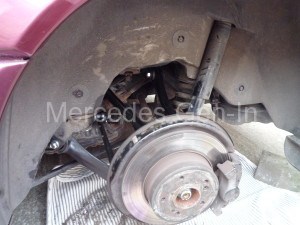
To fit the new Tie Link, slot the arm into the hanger, align the taper of the ball joint and tighten this first using the hex key and 17mm spanner. Then align the hanger end, inserting the new through bolt (cam adjuster) Mark the parts in the same way with paint, copying the exact positions from the removed components. Lower the chassis to support the weight of the vehicle on the Spring Link and tighten the adjuster fully through the hanger, whilst maintaining alignment of your paint marks.
Raise the vehicle again and refit the Pushing link with its plastic trim cover, this fits between the front of the hub carrier and chassis. Use the same raise/lower technique with the jack to correctly stress the rubber bushes on tightening.
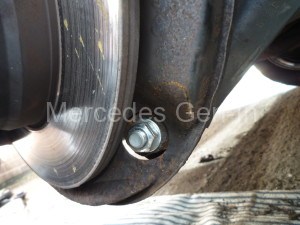
Move on now to replace The Camber Link, use the same above procedure to refit the last of the new components.
Check your work thoroughly, refit the plastic Spring Link cover and then the road wheel, finally lowering the car to the ground. Proceed to do the suspension ‘refresh’ the other side of the vehicle.
It is worth while mentioning that while individual links are off the vehicle, it is possible to test out the condition of the bushes in the Spring Link inner and outer locations, these should be firm and without play.
The complete rear suspension refresh job should take about three to three and a half hours a side, as although straight forward, space is restricted and work is hampered by suborn and seized bolts. Either way, with a little patience and care it should go well.
So having completed the job it was time for the road test. The biggest thought in my mind was… had I wasted my money!
I started the engine and selected drive, the familiar muted thud that had always been there when slipping the selector to D to move off had gone!. I did not believe it, so I did it again – sure enough the slop when taking up the drive had gone. Lets continue…
Out of the street turning out and into narrow roads, the car felt noticeably different, tighter. I was unsure if this was psychological mumbo jumbo, but that is how it felt. Amazingly the steering straightened up more positively out of a turn, pulling out onto the familiar main road proved this without any doubt. Applying throttle on then off, felt no different, which was good news – because it meant that combined with the fact the car steered perfectly straight without drifting or pulling, meant that the Tie Link adjuster had gone back in a near correct position, maintaining a useable and balanced toe in figure for the rear wheel set. Opening up the throttle showed that the work was well worth doing, the car no longer felt vague, and did no longer have a mind of its own wandering as it did before. Result. The most amazing thing for me was to lose the drive uptake when engaging gear from neutral or park, this was indeed unexpected.
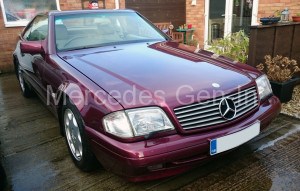
It goes without saying that this is maybe the first time ever I could not convince myself by visual of physical inspection (on or off the car) that any of the joints were degraded to a point of causing this type of wander. It just goes to prove that old soft, not necessarily collapsed bushings, in a Mercedes five link rear suspension set up has a cumulative effect on drivability. If your links are are all old, the rubber will exhibit a kind of aging related softness, this is without doubt time to change them and enjoy the improvements it can make – not just to the wandering, but also to steering geometry in general, add to that the new transmission firmness and the result – Money well spent.
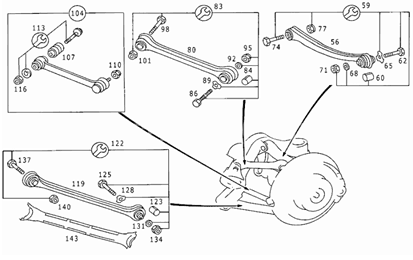
If you were so inclined you could spend in the order of £175.00 upward having the vehicle 4 wheel aligned. My own view is to maybe wait until I get around to doing the few jobs up-front before even considering this. If I don’t get any abnormal tyre wear and drivability is perfect, I see no reason to have this alignment done, although without doubt it should be done in the real world. I have read so many alignment tales of woe borne of the technicians inability to understand the complexities of the Mercedes W124/R129 series it could make things worse – you decide!
Interesting write-up on wheel alignment, front and rear – here.
If I was to review this DIY maintenance work honestly, I would say the resulting positives from such a suspension refresh were probably one of the most value-added improvements you could make to your R129/W124 for what is comparativley a very little monetary investment.
Enjoy !
